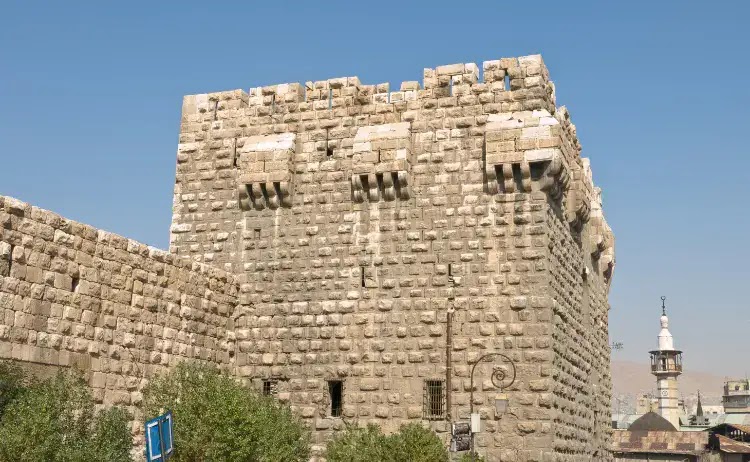Oldest
Top 7 Oldest Cities In The World
The history of human civilization is often traced back to the formation of the first cities. From the earliest days of human history, these cities have been the epicenters of human activity, shaping the course of nations and civilizations.
They have witnessed the rise and fall of empires, the birth of great ideas, and the relentless march of progress. These ancient cities, some of which continue to thrive today, are a testament to the resilience and ingenuity of human societies.
ADVERT
Here we would like to share with you the top 7 oldest cities in the world and their unique history.
7. Susa (6,300 Years Old)
Susa, located in the lower Zagros Mountains about 250 km east of the Tigris River in modern-day Iran, is one of the most important cities of the Ancient Near East. The city was first settled around 4400 BC and continued to be inhabited until 1218 AD.
Susa was the center of the Elamite civilization and later served as the capital of the Achaemenid Empire. The city was strategically located between the Karkheh and Dez Rivers, making it a significant hub for trade and commerce.
One of the most notable landmarks in Susa is the Palace of Darius, a testament to the grandeur of the Achaemenid Empire.
6. Athens (7,000 Years Old)
Athens, the capital of Greece, is one of the oldest named cities in the world, having been continuously inhabited for perhaps 7,000 years. The city’s name, connected to the name of its patron goddess Athena, originates from an earlier pre-Greek language.
The Acropolis, a rocky mound rising in the heart of modern Athens and crowned by three magnificent temples dating from the 5th century BC, is the greatest architectural and artistic complex bequeathed by Greek Antiquity to the world.
In the old town neighborhood of Plaka, located on the northern slopes of the Acropolis, you can find winding streets filled with shops, cafes, and restaurants.
5. Argos (7,000 Years Old)
Argos, located in the northeastern Peloponnese region of Greece is considered the oldest city in Europe. The city was first settled between 8800 and 7000 BC and has been continuously inhabited since 5000 BC.
Argos was a major Mycenaean settlement in the Late Bronze Age (1700-1100 BCE) and remained important throughout the Greek, Hellenistic, and Roman periods until its destruction by the Visigoths in 395 CE.
ADVERT
The city is also associated with the legendary Argus, the third king of the city in ancient times, who renamed it after himself. Both the personal name and placename are linked to the word αργός (argós), which means “white” or “shining".
4. Byblos (7,000 Years Old)
Byblos, also known as Jebeil, Jbeil or Jubayl, is an ancient city located in the Keserwan-Jbeil Governorate of Lebanon. The city is believed to have been first settled between 8800 and 7000 BC and continuously inhabited since 5000 BC.
The city’s rich history is marked by its association with numerous cultures including Egyptian, Phoenician, Assyrian, Persian, Hellenistic, Roman, Genoese, Mamluk, and Ottoman.
The ruins of many successive civilizations are found at Byblos, making it one of the oldest Phoenician cities. In 1984, the historical center of the city was declared a World Heritage Site by UNESCO.
3. Aleppo (8,000 Years Old)
Aleppo, located in northern Syria, is one of the oldest continuously inhabited cities in the world with origins tracing back to the early second millennium B.C.E. The ancient city of Aleppo, known as Dimašq al-Qadīmah in Arabic, is the historic city center.
Many districts of the ancient city remained essentially unchanged since they were initially constructed between the 11th and 16th centuries. The ancient city is centered around the Citadel, a major work of Arab military architecture.
The Citadel of Aleppo, rising above the suqs, mosques, and madrasah of the old walled city, is a testament to Arab military might from the 12th to the 14th centuries. However, it was estimated that 30% of the Ancient City of Aleppo was destroyed in the Battle of Aleppo during the Syrian Civil War.
2. Damascus (11,000 Years Old)
Founded in the 3rd millennium B.C., Damascus has been a significant cultural, commercial, and administrative center since ancient times. The old city of Damascus, known as Dimašq al-Qadīmah in Arabic, is the historic city center.
Enclosed within walls mainly built by the Romans and later fortified by the Ayyubids and Mamluks, the old city is home to numerous archaeological sites, including historical churches and mosques.
ADVERT
In 1979, the historical center of the city was declared a World Heritage Site by UNESCO. However, the ongoing conflict in Syria has led to the inclusion of all Syrian sites, including Damascus, on the list of World Heritage in danger.
1. Jericho (11,000 Years Old)
Jericho, often cited as one of the oldest continuously inhabited cities in the world was built 11,000 years ago. In the Jordan Valley, just north of the Dead Sea and west of the Jordan River, Jericho boasts an oasis-like environment due to several natural springs, particularly the Spring of Elisha.
The first permanent settlement at Jericho dates back to the Pre-Pottery Neolithic period (circa 10,000 – 8,000 BC), marking it as one of the earliest towns. Monumental structures like the Tower of Jericho, possibly one of the earliest examples of communal architecture, were constructed during this time.
Numerous tombs from different periods have been unearthed, indicating evolving burial practices. In 2023, the archaeological site in the city's center, known as Tell es-Sultan / Old Jericho, was inscribed in UNESCO’s list as a World Heritage Site in the State of Palestine.
Source:
Also read: Top 7 Oldest Ruins In The World
















Post a Comment
0 Comments